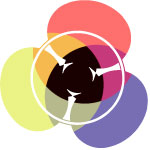Tient je pensais avoir fait un post sur ça mais non… corrigeons ça !
my3dscanner.com est un des quelques services qu’on trouve sur le net et qui transforme un lot de photos en nuage de points, qu’on peut ensuite nettoyer un peu et convertir en stl pour l’imprimer.
Autrement dit n’importe quel bête appareil photo numérique peut servir de scanner 3D ! (à partir de 2 mega pixel) D’autant plus qu’il est conseillé d’utiliser un objet avec de la texture, de même pour le fond, et sans plateau tournant (de quoi se délecter de ces règles d’imperfection).
Et voilà un parfait exemple des bonnes surprises que peut donner l’open-source ^^
Je met le fichier du nuage de points en ligne http://www.thingiverse.com/thing:8168
Pmarxx le reprend et en fait un stl : http://www.thingiverse.com/thing:8229
Tbuser fini de le corriger et tout le monde peut désormais l’imprimer : http://www.thingiverse.com/thing:8232
Ce que j’ai pu essayer aujourd’hui :
Toute première impression avec skeinforge (version 39, j’ai pas encore modifié mes E-step-mm pour utiliser la 41), et pas si mal. Je crois que je vais l’utiliser plus souvent (ne serait-ce que pour la variation de la vitesse selon ce qu’il réalise, quand repsnapper est constant, plus tout les autres réglages, miam) 🙂

Great job! Actually I am the quelqu'un who did initial rendering of the glove 🙂 FYI: your post has been mentioned here http://my3dscanner.com/index.php?option=com_k2&view=item&id=56:we-were-blogged&Itemid=93
Hey, thanks for the mention Paul ! (and for everything^^)
Do you have enough models to RepRap? There are 3 ways to model 1) start from scratch 2) scan 3) do both. What do you think is the best way? Do you think democratisation of 3d manufacturing tools would require more models? and modeling tools? Both soft and scan based? I hope your thesis would answer these questions. It's essential for our my3dscanner.com development
Besides the models available at Thingiverse I think the both methods are useful and complementary.
Starting from scratch have often the advantage to make a parametric model (more or less easy to adapt). While, as you recommend, the scan is so powerful for thing otherwise hard to model… And especially because it's sometimes more accessible for an average person to make a model then scan it for a print (compared to learn a software) I think the spreading of 3dscanning tech and their ease of use will be a huge support for the personal fabrication movement.
So, the more the merrier for the models (I felt sometime lazzy when I see all these things that I can download/print, but there is always the joy to make, and as they said : once you have a reprap you see the world in a "how can I print that" manner ^^)
For the tools too, as mentioned on some posts (at thingi or makerbot or somewhere else) we have now several solutions, maybe in the future not all will be still used but the diversity is welcome.
We'll see how the whole history that begin here will unfold, but I also hope to bring some answer at our questions 🙂
This answers most of my questions and gives our team a lot of encouragement.
Merci!
Keep your fantastic blog rolling!